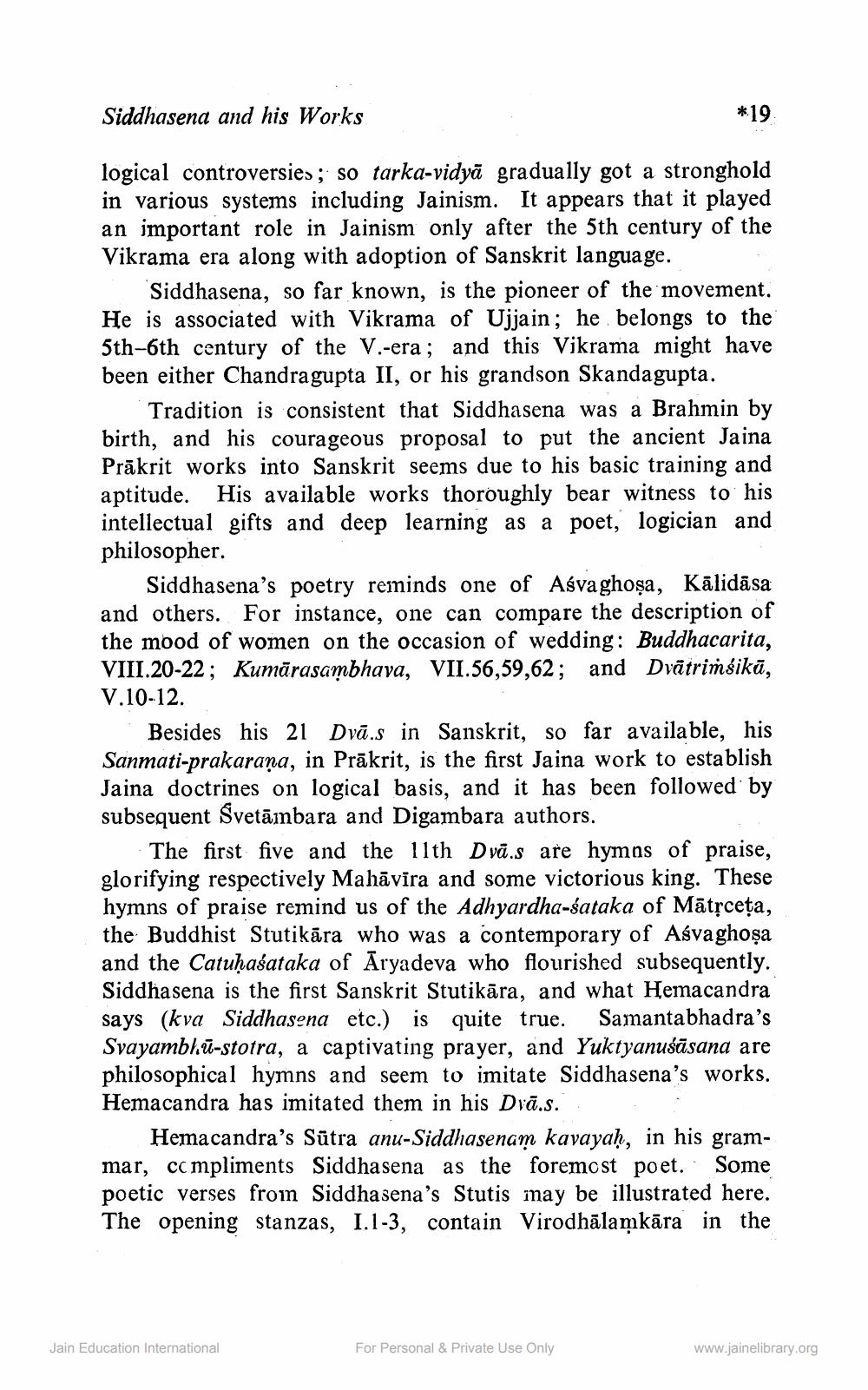________________
Siddhasena and his Works
*19
logical controversies ; so tarka-vidyā gradually got a stronghold in various systems including Jainism. It appears that it played an important role in Jainism only after the 5th century of the Vikrama era along with adoption of Sanskrit language.
Siddhasena, so far known, is the pioneer of the movement. He is associated with Vikrama of Ujjain; he belongs to the 5th-6th century of the V.-era; and this Vikrama might have been either Chandragupta II, or his grandson Skandagupta.
Tradition is consistent that Siddhasena was a Brahmin by birth, and his courageous proposal to put the ancient Jaina Prākrit works into Sanskrit seems due to his basic training and aptitude. His available works thoroughly bear witness to his intellectual gifts and deep learning as a poet, logician and philosopher.
Siddhasena's poetry reminds one of Asvaghoşa, Kālidāsa and others. For instance, one can compare the description of the mood of women on the occasion of wedding: Buddhacarita, VIII.20-22; Kumārasambhava, VII.56,59,62; and Dvātrissikā, V.10-12.
Besides his 21 Dvā.s in Sanskrit, so far available, his Sanmati-prakarana, in Prākrit, is the first Jaina work to establish Jaina doctrines on logical basis, and it has been followed by subsequent Svetāınbara and Digambara authors.
The first five and the 11th Dvā.s are hymns of praise, glorifying respectively Mahāvira and some victorious king. These hymns of praise remind us of the Adhyardha-sataka of Mātộceta, the Buddhist Stutikāra who was a contemporary of Asvaghoşa and the Catuḥaśataka of Aryadeva who flourished subsequently. Siddha sena is the first Sanskrit Stutikāra, and what Hemacandra says (kva Siddhasona etc.) is quite true. Samantabhadra's Svayambhū-stotra, a captivating prayer, and Yuktyanušāsana are philosophical hymns and seem to imitate Siddhasena's works. Hemacandra has imitated them in his Dvā.s.
Hemacandra's Sūtra anu-Siddhasenam kavayaḥ, in his grammar, compliments Siddhasena as the foremost poet. Some poetic verses from Siddhasena's Stutis may be illustrated here. The opening stanzas, I.1-3, contain Virodhālamkāra in the
Jain Education International
For Personal & Private Use Only
www.jainelibrary.org




